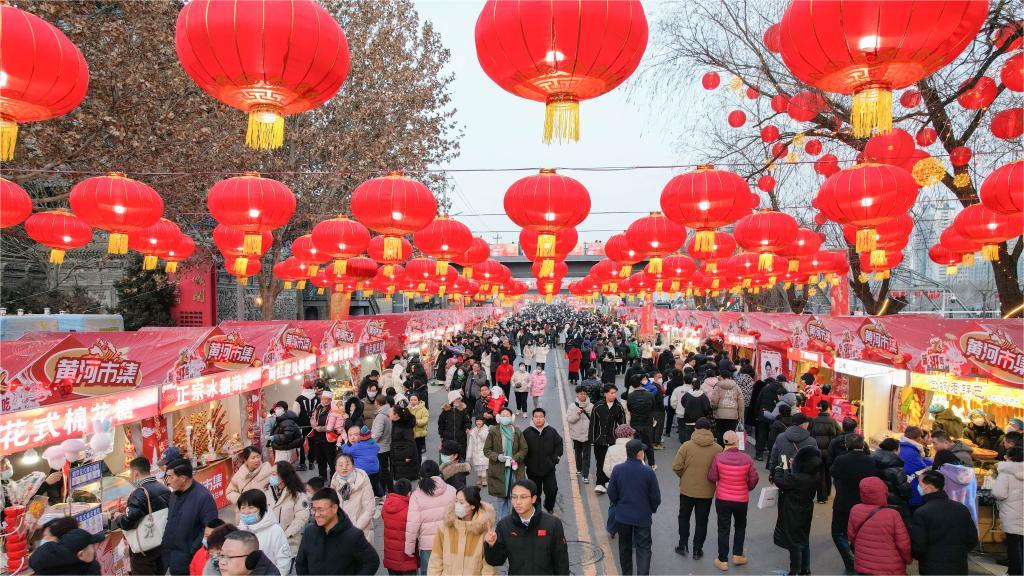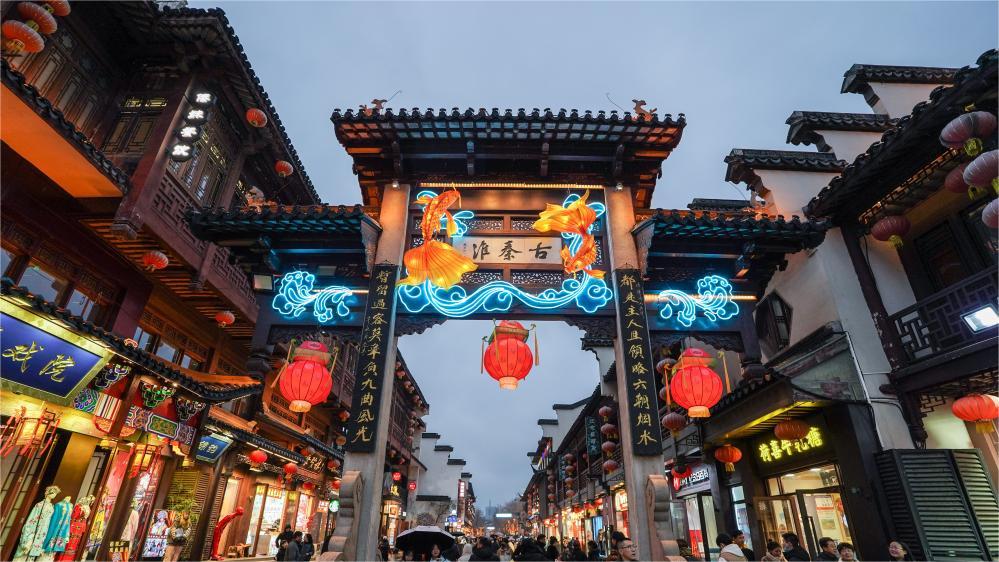Utilization of straws drives rural revitalization, economically and ecologically

This photo taken on Nov. 3, 2023 shows a straw collection station in Dianjiang County, southwest China's Chongqing. (Photo by Zhao Jiale/Xinhua)
CHONGQING, Feb. 14 (Xinhua) -- While Chinese people enjoy the pleasure of harvesting rice, an annoying problem often gets in their way -- the rice straws.
In 2022 alone, southwest China's Chongqing Municipality, for instance, produced 10 million tonnes of straws, which is nearly on a par with the output of grains.
There are essentially two methods for disposing of the rice straws: burning them or cutting them into pieces and throwing them back in the fields. The former will produce thick smoke and has been largely banned by the country in order to protect the environment. The latter can potentially add nutrients to the soil, but also carries the risk of introducing pest eggs to the fields.
"Since the authorities banned the burning of straws, we have been troubled by how to dispose of them," said Ye Hongmei, a local who rents more than 700 mu (about 47 hectares) of farmland with a rotation of rice and oilseed rape every year. "But now things are changing."
In recent years, Dianjiang County of Chongqing, where Ye's lands are located, has explored multiple ways to utilize the resources. In Zhushihua renewable resources utilization Co., Ltd. of Zhoujia Township, Dianjiang, the lands are stacked with straws.
"These high-quality straws have been purchased by liquor factories to make yeast for distillers and the inferior-quality straws will be processed into cushions, which glass or steel factories badly need," said Wu Mengyuan, co-founder of the factory. "We can collect more than 2,000 tonnes of straws from the local villagers."
Dianjiang puts into use rural lands that sit idle such as abandoned schools and factories to build 17 straw collection stations. These stations can collect and consume 50,000 tonnes of straw every year, said Zou Qizhong, director of Dianjiang's agricultural ecological services station, adding that the yearly processed straws in Dianjiang are worth about 59 million yuan (8 million U.S. dollars).
In addition, Dianjiang also seeks to process straws into feeds or organic fertilizers. Six feed factories and two fertilizer factories are now in construction, which will consume 23,000 tonnes of straw per year.
The utilization of straw has delivered real gains to local farmers.
On the one hand, Wu buys straws from local farmers at a price of 1,400 yuan every tonne. That is to say, One mu of land can earn the farmers about 350 yuan, which can fully cover the costs of the seeds and fertilizers in the coming year.
On the other, mushrooming factories are also offering jobs to nearby residents. In Zhoujia, straw utilization and collection factories can provide about 1,500 part or full-time jobs for the locals, according to Zhong Juan, director of the township's agricultural service center.
"My family of three earns more than 20,000 yuan every year by working at nearby factories, and another 1,500 yuan by selling straw," said Jiang Lilu, 63, once living in poverty.
Prior to the straw utilization measures, many burned the straws in secret.
The burning of straw really does harm to the environment. The thick smoke will float to nearby highways and make it hard for the drivers to see. It also puts more pressure on wildfire prevention, said Zou.
"Burning straw in the open air is a rare occurrence nowadays. These measures of utilizing straw have resulted in positive outcomes, both economically and ecologically," he added.?
Photos
Related Stories
- "Village galas" proving a driving force in rural revitalization
- Explainer: How will China promote rural revitalization?
- No 1 Central Document details rural vitalization strategy
- China's No. 1 central document for 2024 charts roadmap for rural revitalization
- China's rural revitalization embraces better opportunities: agriculture minister
Copyright © 2024 People's Daily Online. All Rights Reserved.









